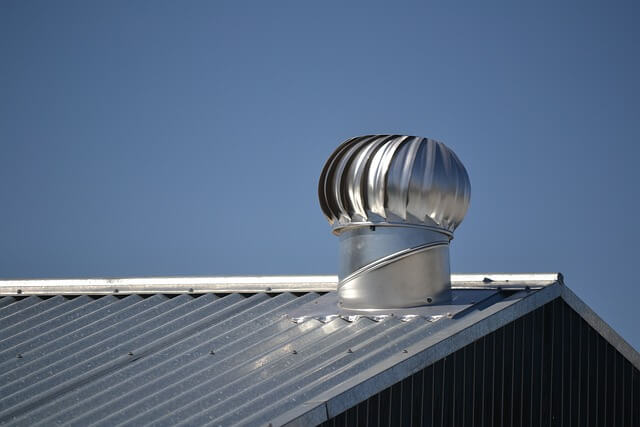DIY Guide: Weatherproofing Windows and Doors with Caulk
Caulking is an important DIY task that helps to weatherproof windows and doors. It involves sealing gaps and cracks around windows and doors to prevent air and water leaks. This not only helps to keep your home comfortable but also lowers your energy bills by reducing the amount of energy needed to heat or cool your home.
To get started, you will need a few basic tools, including a caulking gun, caulk, and a putty knife. It is also important to choose the right type of caulk for the job, as different types of caulk are designed for different applications. For example, silicone caulk is best for areas that are exposed to water, while latex caulk is ideal for indoor use.
In this DIY guide, we will walk you through the steps involved in caulking windows and doors, including how to choose the right type of caulk, how to prepare the surface, and how to apply the caulk. With the right tools and techniques, you can easily weatherproof your windows and doors and enjoy a more comfortable and energy-efficient home.
Understanding Caulking and Weatherproofing
Caulking is a process of sealing gaps and cracks in windows and doors to prevent air and moisture from entering the home. It is an essential part of weatherproofing your home, especially during the winter months. Weatherproofing helps to keep your home warm, dry, and energy-efficient.
Caulking is a simple and cost-effective DIY project that can be done by anyone with the right tools and knowledge. It involves using a caulking gun to apply a sealant material to the gaps and cracks around windows and doors. The sealant material can be made of silicone, latex, or polyurethane, depending on the type of surface being sealed.
Before starting a caulking project, it is important to identify the areas that need to be sealed. This can be done by inspecting the windows and doors for gaps, cracks, or other signs of wear and tear. Common areas that need to be sealed include the gaps between the window frame and the wall, the gaps between the window sash and the frame, and the gaps around the door frame.
When choosing a caulk, it is important to select the right type for the job. Silicone caulk is best for exterior use because it is durable and can withstand extreme temperatures. Latex caulk is best for interior use because it is easy to apply and can be painted over. Polyurethane caulk is best for sealing larger gaps because it expands as it dries, filling in gaps and cracks.
In summary, caulking is an important part of weatherproofing your home, and it is a simple and cost-effective DIY project that can be done by anyone. By identifying the areas that need to be sealed and choosing the right type of caulk for the job, you can keep your home warm, dry, and energy-efficient.
Tools and Materials Needed
Caulking windows and doors is a simple DIY task that can be done with a few basic tools and materials. Here are the things you’ll need to get started:
Tools
- Caulking gun: A caulking gun is an essential tool for applying caulk to windows and doors. It’s important to choose a good quality caulking gun that is easy to use and provides a smooth, even flow of caulk.
- Putty knife: A putty knife is used for removing old caulk and smoothing out new caulk. It’s important to choose a putty knife that is the right size for the job.
- Utility knife: A utility knife is used for cutting the tip of the caulk tube and trimming excess caulk.
- Painter’s tape: Painter’s tape is used to mask off areas around the window or door that you don’t want to get caulk on.
- Damp rag: A damp rag is used for cleaning up excess caulk and smoothing out the caulk line.
Materials
- Exterior caulk: Exterior caulk is designed to withstand the elements and is used for sealing windows and doors. It’s important to choose a caulk that is compatible with the material you’re sealing.
- Backer rod: Backer rod is used to fill large gaps before caulking. It’s important to choose a backer rod that is the right size for the gap you’re filling.
- Rubbing alcohol: Rubbing alcohol is used for cleaning the surface before caulking. It helps to remove dirt, dust, and other debris that can prevent the caulk from adhering properly.
By having these tools and materials on hand, anyone can successfully caulk their windows and doors to prevent drafts and keep their home weatherproof.
Safety Precautions
Caulking windows and doors is a simple and effective way to weatherproof your home and save on energy bills. However, it is important to take certain safety precautions when working with caulk to avoid any accidents or injuries.
First and foremost, make sure to wear protective gear such as gloves and safety glasses when applying caulk. This will prevent any skin irritation or eye injuries due to accidental contact with the caulk.
It is also important to work in a well-ventilated area to avoid inhaling any fumes from the caulk. Open windows or doors and use a fan to circulate the air if necessary.
When using a caulk gun, always point it away from yourself and others to avoid any accidental discharge. Also, be sure to release the pressure on the gun after each use to prevent any leftover caulk from drying out inside the gun.
Finally, always read the manufacturer’s instructions and warnings before using any caulk. This will ensure that you are using the product safely and correctly.
By following these safety precautions, you can ensure a successful and safe caulking project.
Preparing Windows and Doors for Caulking
Before caulking windows and doors, it is important to properly prepare the surfaces to ensure a tight seal. Here are some steps to follow:
- Clean the Surface: Dirt, debris, and old caulk can prevent new caulk from adhering properly. Use a putty knife or scraper to remove any old caulk, and clean the surface with soap and water. Allow it to dry completely before proceeding.
- Check for Gaps: Check the area around the window or door frame for any gaps or cracks. These can be filled with foam sealant before caulking to provide extra insulation.
- Choose the Right Caulk: Select a caulk that is appropriate for the surface material and location. For example, silicone caulk is best for areas that will be exposed to water, while acrylic caulk is good for indoor use.
- Cut the Tip of the Caulk Tube: Cut the tip of the caulk tube at a 45-degree angle to create a small opening. This will allow for more precise application and better control.
- Apply the Caulk: Apply the caulk in a continuous, even bead along the gap or crack. Use a caulk smoothing tool or your finger to smooth out the caulk and ensure it fills the gap completely.
- Allow the Caulk to Dry: The caulk should be allowed to dry completely before painting or exposing it to water. Check the manufacturer’s instructions for drying times.
By following these steps, homeowners can ensure that their windows and doors are properly sealed against drafts and weather.
Choosing the Right Caulk
Choosing the right caulk is essential for ensuring a weatherproof seal around your windows and doors. There are several types of caulks available on the market, and each has its own set of benefits and drawbacks. Here are some factors to consider when choosing the right caulk for your project:
Type of Caulk
One of the first things to consider when choosing the right caulk is the type of caulk you need. The most commonly used type of caulk for general-purpose projects around the home is acrylic latex caulk. This type of caulk is well-suited for sealing joints and gaps in wood trim. It is easy to apply, dries quickly, and can be painted over once it has cured.
If you need a more durable and long-lasting seal, silicone caulk is a good option. It is resistant to moisture, temperature changes, and UV rays, making it ideal for outdoor use. However, it is harder to apply than acrylic latex caulk and can be difficult to remove once it has cured.
Adhesion
Another important factor to consider when choosing the right caulk is adhesion. The caulk you choose needs to have strong adhesion to both porous and nonporous surfaces such as tile, ceramic, and natural stone to prevent cracking or loss of adhesion. Look for a sealant that has high mold and mildew resistance and fast water-ready times for maximum protection and long-lasting durability.
Color
Finally, consider the color of the caulk you choose. While white is the most common color, there are other options available that can match the color of your window or door trim. Some caulks are also paintable, which can be useful if you want to match the color of your walls or trim.
Overall, choosing the right caulk is essential for ensuring a weatherproof seal around your windows and doors. Consider the type of caulk, adhesion, and color when making your decision, and always follow the manufacturer’s instructions for best results.
Caulking Techniques for Windows
Caulking windows is an essential part of weatherproofing your home. It helps to keep out drafts, moisture, and pests. However, if done poorly, it can also be a waste of time and money. Here are some techniques for caulking windows that will help you get the job done right.
1. Choose the Right Caulk
Before you start caulking, you need to choose the right type of caulk for your windows. There are different types of caulks, and each is suitable for different applications. For example, silicone caulk is best for areas that are exposed to moisture, while latex caulk is better for interior use. Also, make sure to choose a caulk that is paintable if you plan to paint your windows.
2. Prepare the Surface
Before you apply caulk, you need to prepare the surface. Make sure the surface is clean, dry, and free of debris. Use a scraper or putty knife to remove any old caulk or paint. Then, use a wire brush to clean the surface thoroughly. Finally, wipe the surface with a clean cloth to remove any dust or debris.
3. Apply the Caulk
Once the surface is ready, it’s time to apply the caulk. Hold the caulking gun at a 45-degree angle and apply a steady, continuous bead of caulk along the edge of the window frame. Use a smooth, consistent motion to apply the caulk. If you need to stop, release the pressure on the gun to prevent the caulk from dripping.
4. Smooth the Caulk
After you apply the caulk, use a caulk smoothing tool or your finger to smooth it out. This will help to ensure that the caulk is evenly distributed and fills any gaps or cracks. Make sure to wipe away any excess caulk with a damp cloth.
5. Let the Caulk Dry
Finally, let the caulk dry completely before painting or exposing it to the elements. This can take anywhere from a few hours to a few days, depending on the type of caulk you used and the weather conditions.
By following these caulking techniques for windows, you can ensure that your windows are properly sealed and weatherproofed. Remember to choose the right caulk, prepare the surface, apply the caulk properly, smooth it out, and let it dry before painting or exposing it to the elements.

Caulking Techniques for Doors
When it comes to weatherproofing doors, caulking is an important step to keep the elements out of your home. Here are some caulking techniques for doors that can help you ensure a tight seal.
1. Clean the Area
Before applying caulk, make sure the area is clean and dry. Remove any old caulk, dirt, or debris with a putty knife or scraper. You can use a vacuum or a damp cloth to remove any remaining dust or debris.
2. Choose the Right Caulk
Choosing the right caulk is essential for a successful caulking job. For doors, it’s best to use a silicone-based caulk that can withstand extreme temperatures and won’t shrink or crack over time. Make sure to read the label and choose a caulk that is specifically designed for doors and windows.
3. Apply the Caulk
Apply the caulk in a continuous, even bead along the gap between the door frame and the wall. Use a caulk gun to apply the caulk and work in small sections at a time. Smooth the caulk with a caulk smoothing tool or your finger to ensure a tight seal.
4. Let it Dry
Allow the caulk to dry completely before painting or exposing it to the elements. The drying time will depend on the type of caulk you used and the temperature and humidity of your environment. Check the label for specific drying times.
By following these caulking techniques for doors, you can ensure a tight seal and keep the elements out of your home.
Smoothing and Finishing the Caulk
After applying the caulk, it is important to smooth and finish it to ensure a clean and professional look. There are several methods to do this, and the choice of method depends on personal preference and the type of caulk used.
One common method is to use a caulk smoothing tool or a putty knife. Hold the tool at a 45-degree angle and run it along the bead of caulk, pressing lightly to flatten and smooth it. Repeat until the entire bead is smooth and even. This method is effective for both silicone and latex-based caulks.
Another method is to use a finger dipped in soapy water or rubbing alcohol. Gently run your finger along the bead of caulk, applying light pressure to smooth it out. This method is best for silicone-based caulks, as they are more difficult to smooth with a tool.
It is important to note that the smoother the caulk, the better it will look and the more effective it will be at sealing gaps and preventing drafts. If necessary, use a damp cloth to remove excess caulk or to clean up any mistakes.
In addition to smoothing, it is also important to finish the caulk by removing any excess and ensuring that it is flush with the surface. This can be done by running a razor blade or putty knife along the edge of the caulk, being careful not to damage the surrounding surface.
Overall, taking the time to smooth and finish the caulk will result in a more professional and effective weatherproofing job.
Cleaning Up After Caulking
Once the caulking is done, cleaning up is the next step. It is important to clean up any excess caulk as soon as possible before it dries up. This will ensure a neat and clean finish to the caulking job.
To clean up the excess caulk, use a damp rag or sponge to wipe away any excess caulk. Be sure to wipe gently to avoid smudging the caulk. For stubborn caulk stains, use rubbing alcohol to clean them up.
It is also important to remove any painter’s tape used during the caulking process. This should be done carefully to avoid peeling off the fresh caulk. Gently lift the tape at a 45-degree angle to remove it.
After cleaning up, allow the caulk to dry completely before painting or applying any sealant. This will ensure a long-lasting and effective weatherproofing job.
In summary, cleaning up after caulking is an important step in ensuring a neat and clean finish to the caulking job. Use a damp rag or sponge and rubbing alcohol to clean up any excess caulk and remove painter’s tape carefully. Allow the caulk to dry completely before painting or applying any sealant.
Maintenance and Inspection Tips
To ensure that caulking around windows and doors remains effective, regular maintenance and inspection are crucial. Here are some tips to help you maintain your caulked windows and doors:
- Inspect caulking annually: Regularly inspect your windows and doors to check for any gaps or cracks in the caulking. This is especially important after severe weather conditions such as heavy rain or strong winds.
- Remove old caulking: If the caulking is damaged or cracked, it needs to be removed and replaced. Use a putty knife to remove the old caulking and make sure the surface is clean and dry before applying new caulking.
- Choose the right type of caulk: Use a high-quality caulk that is designed for the specific needs of your windows and doors. For example, silicone caulk is ideal for areas that are exposed to moisture, while latex caulk is best for interior use.
- Apply caulk evenly: Always apply caulk in a smooth and even manner to ensure that it adheres properly to the surface. Use a caulking gun with a thumb release for better control.
- Allow the caulk to dry: After applying caulk, allow it to dry completely before painting or exposing it to moisture. The drying time will depend on the type of caulk used and the weather conditions.
By following these maintenance and inspection tips, you can keep your windows and doors weatherproofed and ensure that your home remains energy-efficient.
Troubleshooting Common Issues
Caulking windows and doors can be a simple and effective way to weatherproof your home. However, there are some common issues that may arise during the process. Here are some troubleshooting tips to help you avoid these issues:
Issue 1: Uneven Bead of Caulk
One common issue when caulking windows and doors is an uneven bead of caulk. This can happen when the caulk gun is not held at a consistent angle or when the pressure on the gun is not consistent. To avoid this issue, make sure to hold the caulk gun at a consistent angle and apply even pressure to the trigger.
Issue 2: Caulk Not Adhering to Surface
Another common issue is when the caulk does not adhere to the surface it is being applied to. This can happen when the surface is not clean or when the caulk is applied to a wet surface. To avoid this issue, make sure to clean the surface thoroughly before applying caulk, and wait for the surface to dry completely before applying caulk.
Issue 3: Caulk Shrinking or Cracking
Sometimes caulk can shrink or crack over time, which can lead to gaps and leaks. This can happen when the caulk is exposed to extreme temperatures or when it is applied too thinly. To avoid this issue, make sure to apply a thick enough layer of caulk and use a high-quality caulk that is designed to withstand extreme temperatures.
By following these troubleshooting tips, you can avoid common issues when caulking windows and doors and ensure that your home is properly weatherproofed.
Frequently Asked Questions
What type of caulk is best suited for sealing exterior windows and doors?
For sealing exterior windows and doors, it is recommended to use silicone or latex caulk. These types of caulk are flexible and can withstand the expansion and contraction caused by temperature changes. They are also waterproof and can resist mildew growth.
How do you properly apply caulk to windows and doors for effective weatherproofing?
To apply caulk to windows and doors, first, clean the area thoroughly with a scraper or putty knife to remove any old caulk or debris. Next, cut the tip of the caulk tube at a 45-degree angle and insert it into a caulk gun. Apply a steady and continuous bead of caulk along the seam between the window or door and the frame. Use a caulk smoothing tool or your finger to smooth out the caulk and remove any excess.
What are common mistakes to avoid when caulking windows and doors?
One common mistake is cutting the tip of the caulk tube too large, which can result in an uneven and messy bead of caulk. Another mistake is not cleaning the area properly before applying the caulk, which can prevent the caulk from adhering properly. Additionally, not smoothing out the caulk can result in a rough and unattractive finish.
Can you recommend a waterproof sealant for window and door exteriors?
One recommended waterproof sealant for window and door exteriors is GE Silicone II Window and Door Sealant. This sealant is waterproof and can withstand extreme temperatures and weather conditions.
What are the steps for sealing interior windows with silicone caulk?
To seal interior windows with silicone caulk, first, clean the area thoroughly with a scraper or putty knife to remove any old caulk or debris. Next, cut the tip of the caulk tube at a 45-degree angle and insert it into a caulk gun. Apply a steady and continuous bead of caulk along the seam between the window and the frame. Use a caulk smoothing tool or your finger to smooth out the caulk and remove any excess.
Is there a preferred method for caulking window trim on the exterior of a home?
One preferred method for caulking window trim on the exterior of a home is to apply the caulk in a single continuous bead along the seam between the trim and the siding. Use a caulk smoothing tool or your finger to smooth out the caulk and remove any excess. It is also recommended to paint over the caulk once it has dried to protect it from UV rays and weather damage.





